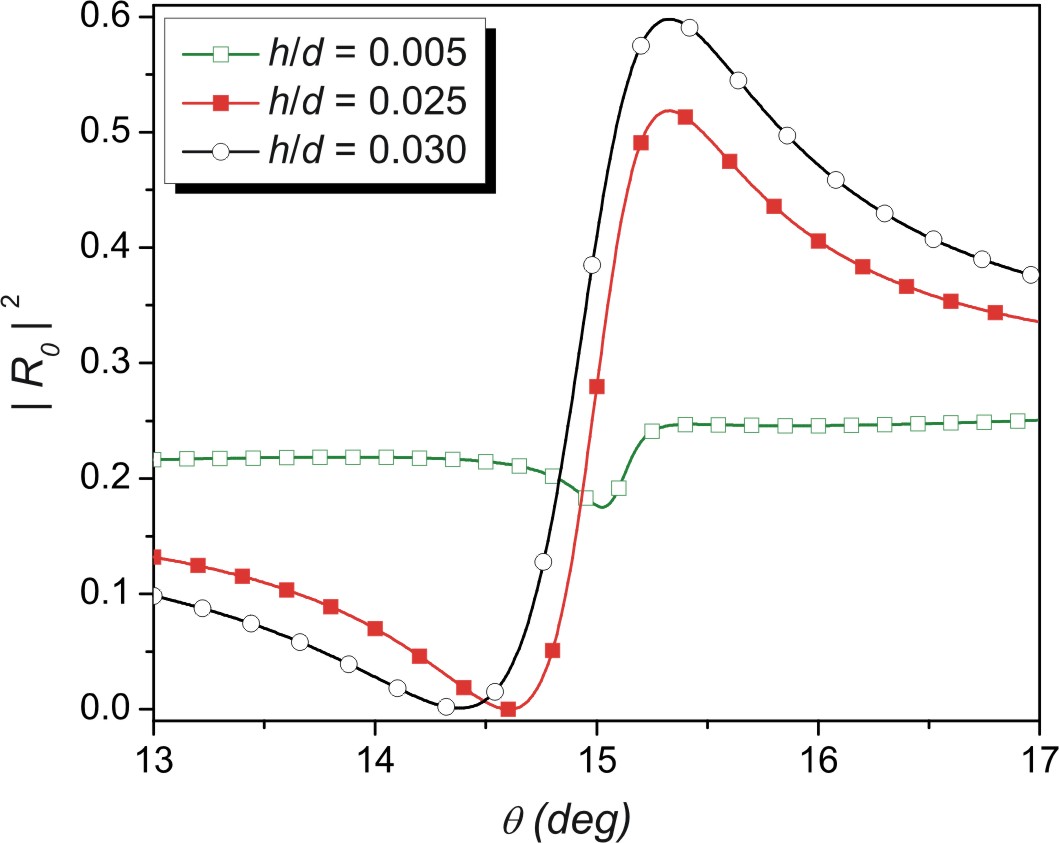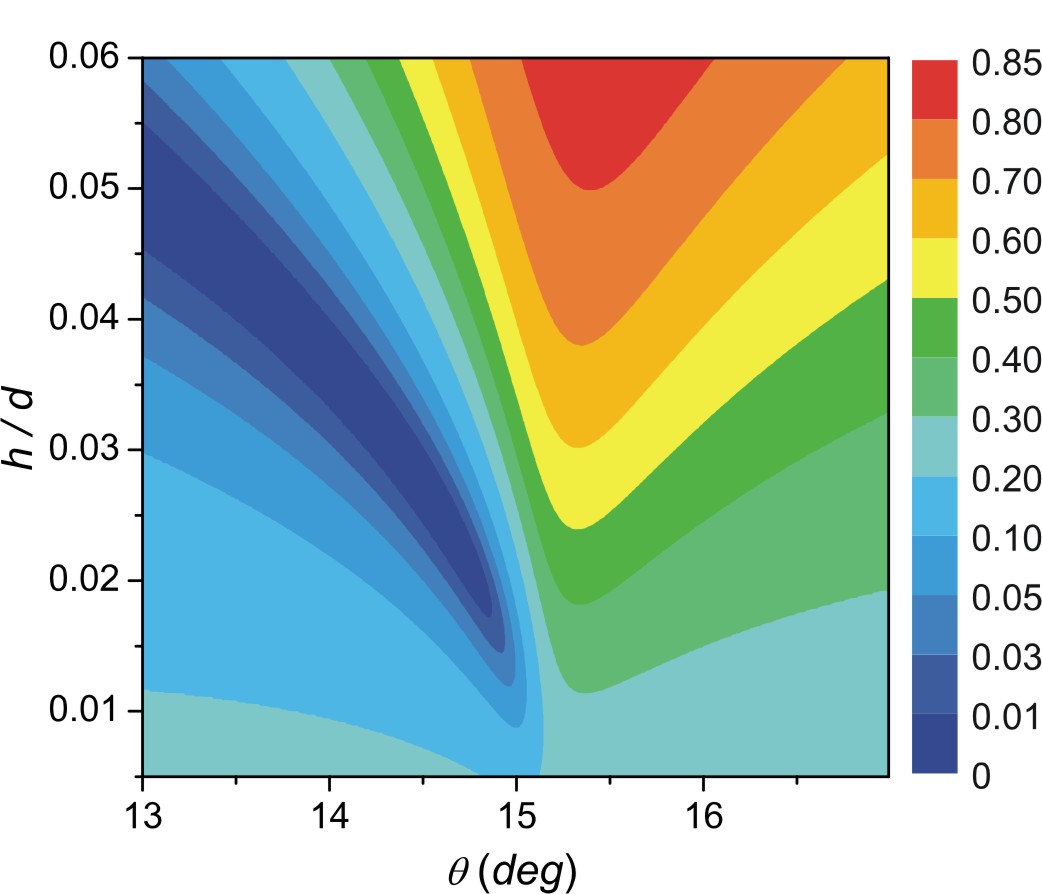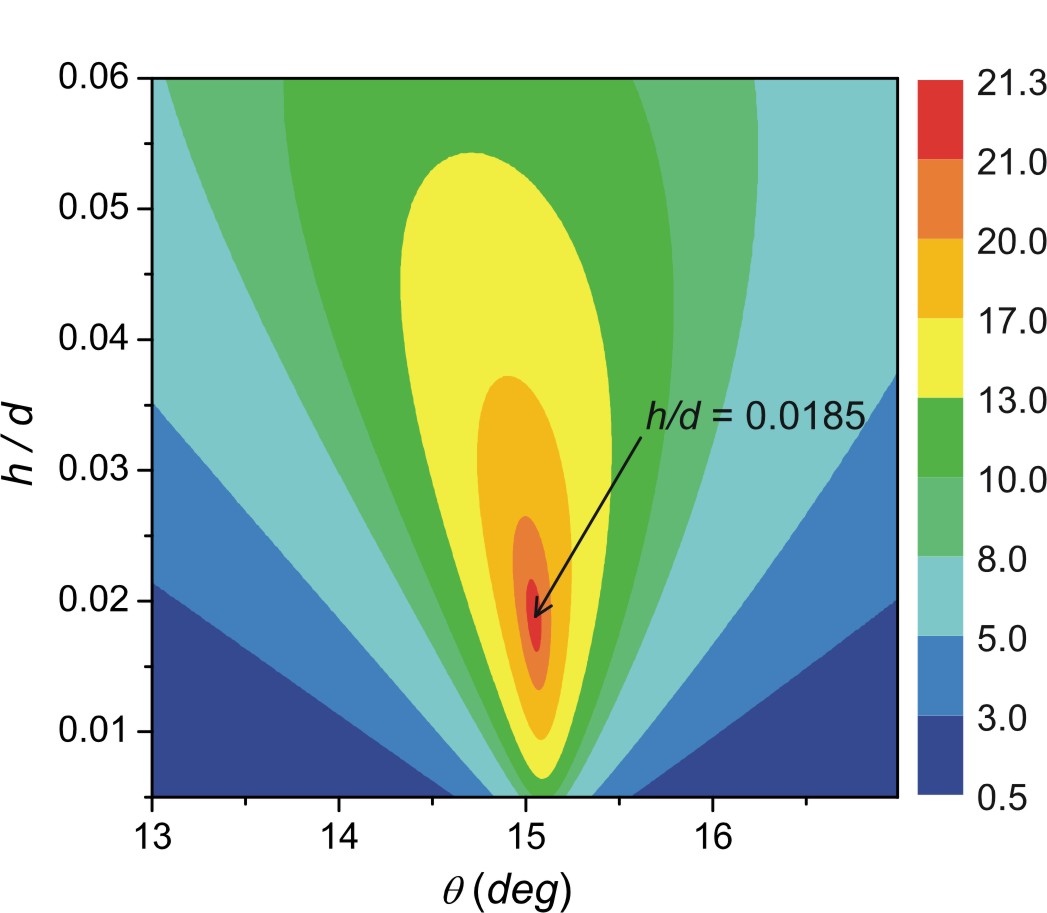
and for different values of h/d in the range 0.005–0.030.

(maximum value in the above figure), the maximum value of the reflectivity
reaches a increasingly larger value. The introduction of a weak
corrugation in an poorly reflecting surface, produces high reflectivities in
angular regions corresponding to ESW excitation. For example, when h/d=0.06,
the surface reflects 85 % of the incident power.

previously described regimes (After total reflection ), we observed that the amplitude
of the evanescent order,which is phase matched with the ESW, does not take its
maximum value under the same conditions where maximal absorption of the incident
wave occurs, a feature that should prevent us from obtaining maps of the ESW
dispersion relation by optically detecting the angular position of the minima, as is of
common use in conventional prism and grating couplers.